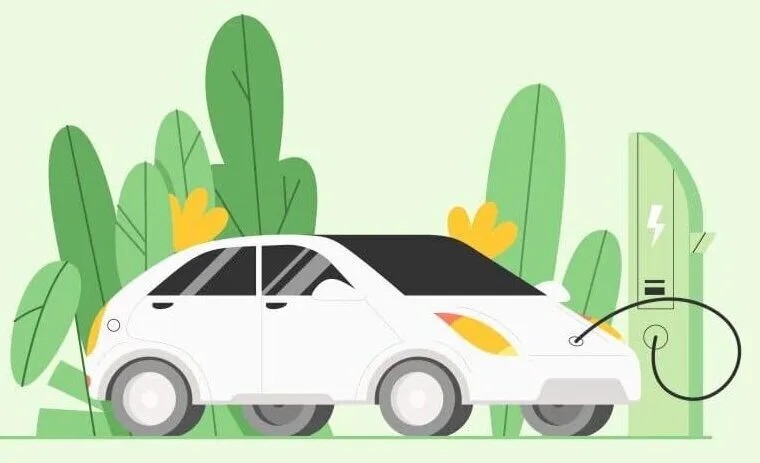Introduction
As a Leading EV Charger Manufacturer in China, LiCB Charge Delivers Reliable AC and DC Electric Vehicle Charging Stations Alongside Comprehensive Charging Solutions.
In recent years, the term “green car” has gained popularity as consumers seek sustainable transportation options and EV charging solutions to reduce emissions and environmental impact. With climate change a pressing global issue, green cars represent a significant shift in the automotive industry toward eco-friendlier technologies. But what exactly is a green car, and what options are available? This article will define green cars, explore the different types, discuss barriers to widespread adoption, and offer tips on choosing the right green car for you.
What Are Green Cars?
A green car is any vehicle designed to produce lower emissions and be more environmentally friendly than traditional internal combustion engine (ICE) vehicles. These cars focus on minimizing carbon dioxide (CO₂) emissions, reducing fossil fuel dependence, and often use renewable or less-polluting energy sources. While gasoline and diesel vehicles still dominate, green cars are reshaping the automotive landscape through technologies such as battery power, hybrid systems, and hydrogen fuel cells.
Green cars generally fall into four main categories:
Types of Green Cars
1. Battery-Electric Vehicles (BEVs)
BEVs run entirely on rechargeable batteries and produce zero tailpipe emissions, making them the most eco-friendly option. They are charged via electric charging stations that are increasingly accessible in urban and suburban areas. Key advantages include lower fuel costs, reduced maintenance, and high efficiency. Typical driving ranges vary between 100 to 400 miles depending on battery size and model.
2. Hybrid Electric Vehicles (HEVs)
HEVs combine a traditional internal combustion engine with an electric motor, which assists the engine to improve fuel efficiency and reduce emissions. They recharge their batteries through regenerative braking, capturing energy normally lost during braking. While they still use gasoline, HEVs emit fewer pollutants and consume less fuel than conventional vehicles. Popular models like the Toyota Prius require no charging stations, making them practical in areas with limited EV infrastructure.
3. Plug-In Hybrid Electric Vehicles (PHEVs)
PHEVs blend HEV and BEV technologies. They have a larger battery than HEVs and can be plugged in to recharge, allowing them to run purely on electric power for 20 to 50 miles before switching to gasoline. This offers flexibility: electric power for short trips and gasoline for longer drives. PHEVs are popular among drivers worried about battery range or limited charging options.
4. Hydrogen Fuel Cell Electric Vehicles (FCEVs)
FCEVs generate electricity through hydrogen fuel cells, which combine hydrogen gas with oxygen to power the car, emitting only water vapor as a byproduct. FCEVs offer fast refueling similar to gasoline cars and typically longer ranges than BEVs. However, hydrogen refueling stations are scarce, and hydrogen production is energy-intensive, affecting the overall environmental benefit.
Barriers to Widespread Adoption
Despite their promise, green cars face several challenges:
- Limited Infrastructure: Charging and hydrogen refueling stations are sparse, especially in rural areas, contributing to “range anxiety.”
- High Upfront Costs: Although prices are dropping, green cars generally cost more upfront than gasoline vehicles. Government subsidies and tax incentives help but are not universally available.
- Consumer Awareness: Many potential buyers remain unfamiliar with the benefits and practicalities of green cars.
However, as technology advances and incentives improve, adoption is steadily increasing, with more affordable and practical options becoming available.
How to Choose the Right Green Car
When selecting a green car, consider the following:
1. Driving Distance and Range
If your daily driving is short and you have easy access to charging, a BEV may suit you well. For longer trips, consider a PHEV or FCEV to alleviate range concerns.
2. Charging or Refueling Infrastructure
Assess the availability of charging or hydrogen stations in your area. A BEV requires accessible charging, while HEVs and PHEVs can be more flexible where infrastructure is limited.
3. Cost and Incentives
Evaluate your budget and look for government rebates, tax credits, or discounts. Consider long-term savings on fuel and maintenance, which can offset higher upfront costs.
4. Environmental Impact
If reducing emissions is your top priority, BEVs and FCEVs are the greenest options. PHEVs and HEVs still produce emissions but are significantly cleaner than traditional vehicles.
5. Maintenance and Battery Life
BEVs tend to have lower maintenance needs but watch for battery degradation and replacement costs. HEVs and PHEVs require maintenance for both their electric and combustion systems.
Conclusion
Green cars are paving the way for a more sustainable transportation future. From fully electric BEVs to hybrid and hydrogen-powered options, these vehicles reduce environmental impact while offering new possibilities in personal and commercial transport. Though challenges remain—such as infrastructure limitations and upfront costs—ongoing advancements and incentives are making green cars increasingly practical and accessible. By carefully assessing your driving habits, budget, and local infrastructure, you can choose a green car that fits your lifestyle and helps contribute to a cleaner planet.Know more about Google SEO Directory





Comments